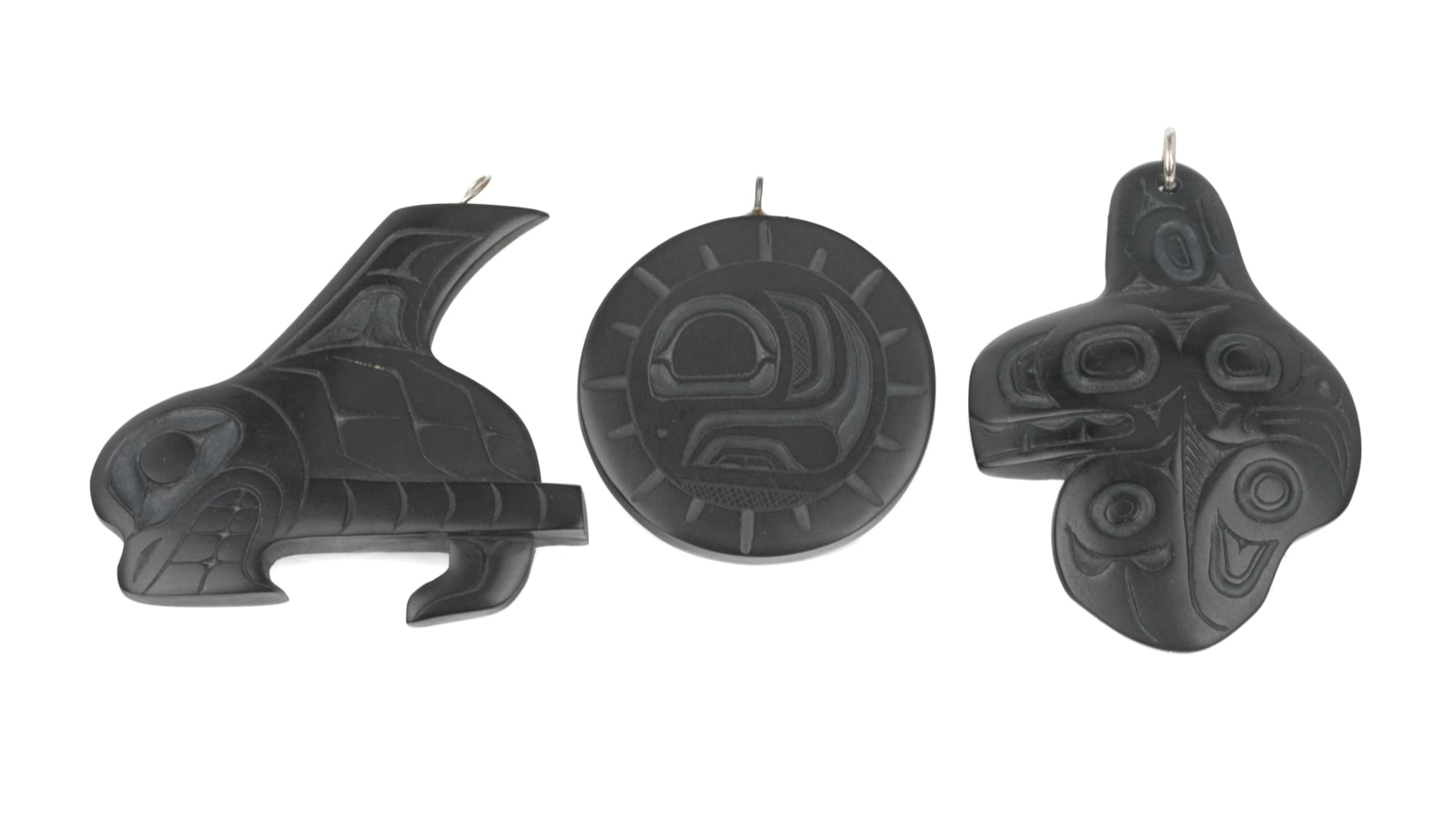-
Artworks
CALVIN BELL (1950-), HAIDA, MASSET / RICHARD SILAS YELTATZIE (1955-1974) HAIDA / PAT DIXON (1938-2015) HAIDA
Three Pendants, c. 2000s / Jan 1974 / Oct 2002each argillite, the first a killer whale by Calvin Bell, 2 x 2.25 x 0.25 in (5.1 x 5.7 x 0.6 cm), titled, signed, and inscribed, "Killer whale / by / Calvin Bell / Haida";
the second is a trout design by Richard Yeltazie, 1.75 x 1.75 x 0.125 (4.4 x 4.4 x 0.3 cm), titled, signed, and dated, '"Trout" / design - By / Richard Yeltazie / Skidegate Haida / Jan /74';
the third, an opposing eagle and killer whale by Pat Dixon, 2.5 x 2 x 0.25 in (6.3 x 5.1 x 0.6 cm), signed, titled, and dated, "Pat Dixon / Eagle / Killer Whale / 10/2002."LOT 28
ESTIMATE: $200 — $300
PRICE REALIZED: $231.80
21 August 2025Further images
A fine selection of three argillite pendants, spanning the mid-1970s to the early 2000s. Left to right, the first pendant, by Calvin Bell, depicts a Killer Whale in mid-leap. The...A fine selection of three argillite pendants, spanning the mid-1970s to the early 2000s. Left to right, the first pendant, by Calvin Bell, depicts a Killer Whale in mid-leap. The design is rendered in a series of s-forms for the body and u-shapes for the long, thin, pectoral fin. The sharp point on the bottom of the Killer Whale jaw may show a connection to the art of the late Haida argillite carver Myles Edgars (1958-2021).
The second pendant, in the centre, is circular and features what Bill Holm called a “salmon trout head” in his formline design lexicon, although some artists today prefer to call it a complex ovoid. The trout head is surrounded by lines emanating out from it, emphasizing the forms within. The artist, Richard Silas Yeltatzie, was just beginning his carving career at the age of 19 when his life was cut short in a tragic place crash.
The third and final pendant also features a Killer Whale. This pendant, by Pat Dixon, creates the image of a Killer Whale through a visual pun combining both Whale and Eagle elements. In the composite image, the head and wing of the Eagle make the body and fluke of the Whale, respectively. The use of visual puns and compound imagery is a cornerstone of Northwest Coast design, which this diminutive pendant very well illustrates.
Christopher W. Smith
Provenance
Private Collection, USA.
Join our mailing list
* denotes required fields
We will process the personal data you have supplied in accordance with our privacy policy (available on request). You can unsubscribe or change your preferences at any time by clicking the link in our emails.














